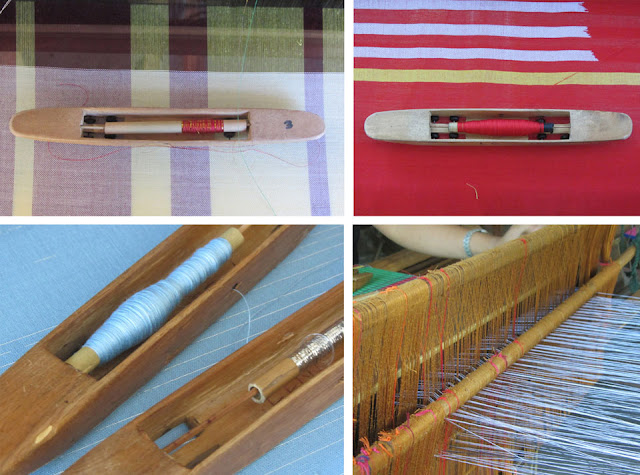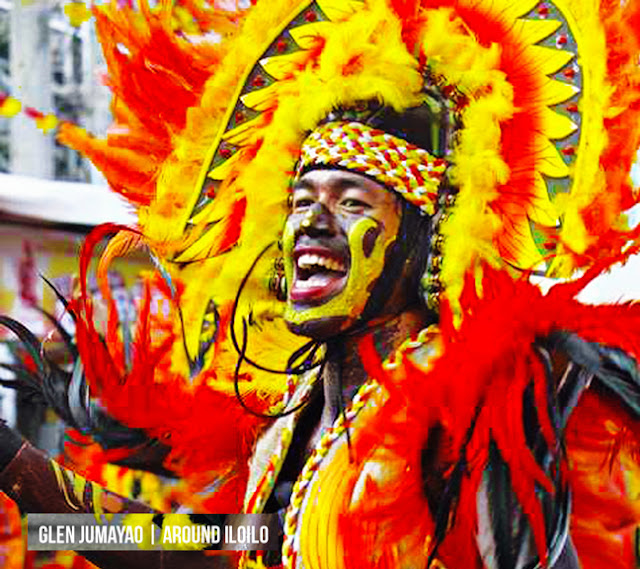Miag-ao hablon weaving
Buying, using, giving as
presents and promoting our local products are ways to help the local economy.
One of these recommended products is ‘hablon’ because this is not just a commodity but this is also a reflection of a community's culture and dreams.
Hablon came from the word ‘habol’,
a local word that means ‘weave’. Thus, hablon refers to the weaving process and the
finished product that is common in places like Miag-ao, Villa and Antique province, all in
Panay island in the Philippines.
During a media and bloggers' trip to the town of Miag-ao in southern Iloilo, we visited their showrooms (one is at the town proper and another one is at Brgy. Indag-an) where hablon products such as shawls, barongs, gowns, clothing material, accessories and storytelling dolls wearing hablon dresses, among others, are on display. No less than the town mayor, Hon. Macario Napulan welcomed us.
Tourist Attraction
Mayor Napulan
shared that Miag-ao is known for two things. One is the Sto. Tomas de
Villanueva Parish Church which is a UNESCO World Heritage Site and the other
one is hablon weaving.
“I am confident to say that hablon weaving originated in Miag-ao even before the Spaniards came to the Philippines,” he said. He added that Spaniards found the natives already making multi-colored woven patadyong.
“I am confident to say that hablon weaving originated in Miag-ao even before the Spaniards came to the Philippines,” he said. He added that Spaniards found the natives already making multi-colored woven patadyong.
“The Miag-ao Parish under
Fray Francisco Perez further promoted patadyong which spurred the creation of
other products such as mosquito nets, blankets and pillow cases,” Napulan said.
He explained that hablon was also exported
to other countries after the international Port of Iloilo was opened in 1855.
However, it also paved the way for the entry of machine-made English textile,
which is softer and cheaper (hablon’s abaca material tend to be rough). The
sugar industry also emerged. With more people favoring cheaper textiles and more
entrepreneurs financing sugar production and export, hablon weaving experienced
its downfall.
But, hablon weaving experienced
its rebirth when international designer Nono Palmos, who is a native of Miag-ao,
staged a hablon fashion show at their plaza.
Additionally, other designers such as the Designers’ Guild of Iloilo also incorporate hablon in their designs.
A few years ago, Ilongga designer Jaki Penalosa told this writer they would often go to Brgy. Indag-an, Miag-ao and ask the weavers to create new patterns for their fashion show collections.
Additionally, other designers such as the Designers’ Guild of Iloilo also incorporate hablon in their designs.
A few years ago, Ilongga designer Jaki Penalosa told this writer they would often go to Brgy. Indag-an, Miag-ao and ask the weavers to create new patterns for their fashion show collections.
 |
Brgy Indag-an, Miag-ao weaver Analyn Tiring
|
Innovation
However, many people found hablon to be expensive and rough. To address this, the local government of Miagao is taking steps to create affordable and softer hablon products with the help
of Palmos.
"Before, we only used abaca. But now, we are combining rayon, cotton and abaca,” said Palmos. "While it is indeed expensive when you ask a Nono Palmos to design your clothes, we have created a secondary line that is affordable," he added.
"Before, we only used abaca. But now, we are combining rayon, cotton and abaca,” said Palmos. "While it is indeed expensive when you ask a Nono Palmos to design your clothes, we have created a secondary line that is affordable," he added.
Noting an increase in the demand for hablon products, the weavers are also continuously innovating by making modern designs to suit modern tastes.
LGU Support
To further support the industry, Napulan said that the local government has allotted P3 million to put up the Miag-ao Weaving Center in Brgy. Indag-an where most of the weavers are located.
Currently, the village is
home to the Indag-an Multipurpose Cooperative. It is housed in a small
structure for weaving and display. The cooperative’s
members include young women.
Napulan explained that more and more women are lured into this livelihood. One of them is Analyn Tiring, 26, who said that she can finish four meters of hablon in just one day and that her income has helped sustain her family’s needs.
Napulan said that to further support the industry, hablon is now used for government employees' uniforms and Miagao students ’ uniforms.
Napulan explained that more and more women are lured into this livelihood. One of them is Analyn Tiring, 26, who said that she can finish four meters of hablon in just one day and that her income has helped sustain her family’s needs.
Napulan said that to further support the industry, hablon is now used for government employees' uniforms and Miagao students ’ uniforms.
Buy, use or give hablon as gift; your support will come a long way.
Those who are interested to support Miag-ao’s hablon industry may email the local government unit at lgumiagao@yahoo.com or visit their website www.miagao.gov.ph.
Those who are interested to support Miag-ao’s hablon industry may email the local government unit at lgumiagao@yahoo.com or visit their website www.miagao.gov.ph.
 |
Designers with Miag-ao Mayor Macario Napulan and Vice
Mayor Leonardo Naldoza
|







